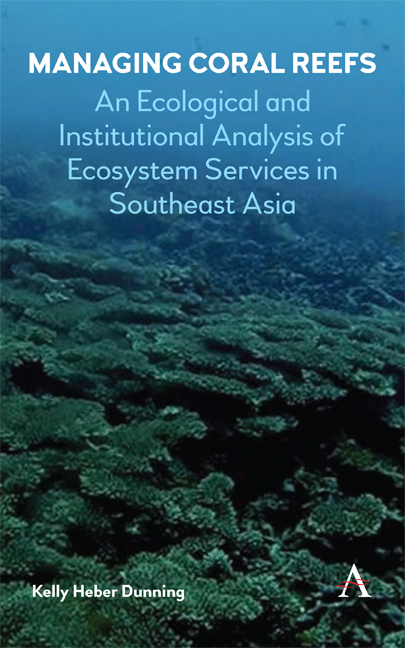 Managing Coral Reefs
Managing Coral Reefs Book contents
- Frontmatter
- Contents
- List of Figures
- List of Tables
- Acknowledgments
- List of Abbreviations
- 1 Introduction
- 2 Theory, Practice and Policy Context of Coral Reef Management
- 3 Governing Natural Resources in Indonesia and Malaysia
- 4 Case Study Sites and the Coral Triangle
- 5 Integrated Management of Marine Protected Areas
- 6 Legitimate Marine Protected Areas
- 7 Adaptive Capacity of Marine Protected Areas
- 8 Policy Recommendations for Marine Protected Area Management in Developing Countries
- Appendix A Research Design
- Appendix B Data and Methods
- Appendix C Coral Cover Results
- References
- Index
6 - Legitimate Marine Protected Areas
Published online by Cambridge University Press: 16 August 2018
- Frontmatter
- Contents
- List of Figures
- List of Tables
- Acknowledgments
- List of Abbreviations
- 1 Introduction
- 2 Theory, Practice and Policy Context of Coral Reef Management
- 3 Governing Natural Resources in Indonesia and Malaysia
- 4 Case Study Sites and the Coral Triangle
- 5 Integrated Management of Marine Protected Areas
- 6 Legitimate Marine Protected Areas
- 7 Adaptive Capacity of Marine Protected Areas
- 8 Policy Recommendations for Marine Protected Area Management in Developing Countries
- Appendix A Research Design
- Appendix B Data and Methods
- Appendix C Coral Cover Results
- References
- Index
Summary
Overview: Stakeholder Perceptions on Legitimacy
In this chapter I discuss the different perceptions on marine protected area (MPA) legitimacy across Indonesian and Malaysian sites. Legitimacy is when resource management decisions are shown to accomplish stated objectives, or where management decisions are made in appropriate ways (March and Olsen 1989). An institutionmust have the “right to rule,” secure compliance and issue sanctions for non-compliance (Buchanan and Keohane 2006, 3). In order to operationalize this definition in the field, I gauged legitimacy in three ways by asking stakeholders (1) whether they felt the organization actually does its job and effectively manages the reef, (2) whether the MPA is something they value in their community and (3) whether power-sharing between government, MPA managers and local stakeholders occurs.
Stakeholders in Indonesia and Malaysia were asked three questions to measure legitimacy. The first question asked whether decisions on reef management accomplish objectives and whether they were made in appropriate ways by the MPA. The second question measured the “right to rule” of the MPAby asking stakeholderswhether they value it. The third question, different in Malaysia and Indonesia, asked stakeholders whether they think that power sharing arrangements are in place, and whether these are arrangements that increase stakeholder compliance with rules. During the survey and interview process, stakeholders from both sites added additional components to my own definition of legitimacy. These included the following: (1) the use of science in decision making, (2) the visibility of MPA leaders and their interaction with local people and (3) leaders and members of the MPA taking responsibility for their role as reef protectors in the village.
As in the previous chapter, I offer the example of two hypothetical MPAs, Case A and Case B in order to demonstrate what legitimate MPAs look like, Case A where there is legitimate management and Case B where there is not. Beginning with the MPA in Case A, when stakeholders speak of their reef management institution, there is a widely held perception that the dozen or so men who make up the MPA's members are always “on the job.” They are regularly seen patrolling the reef by boat, or they regularly report illegal activity to the police or head of the village.
- Type
- Chapter
- Information
- Managing Coral ReefsAn Ecological and Institutional Analysis of Ecosystem Services in Southeast Asia, pp. 89 - 120Publisher: Anthem PressPrint publication year: 2018


